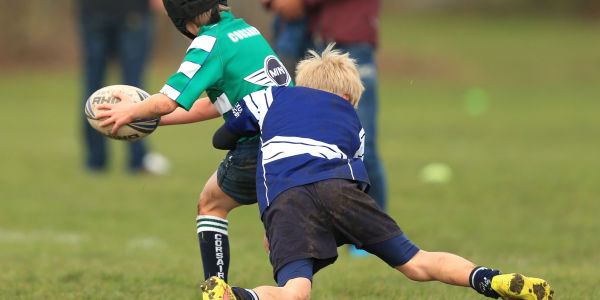Doctors have described how teenage rugby players have suffered serious injuries that are normally seen in road crashes.
They argued it may be necessary to change the rules around tackling or cut the number of players in school games to prevent the “potentially devastating consequences of these injuries”.
Their comments, in the journal BMJ Case Reports, come after m ore than 70 doctors and health experts wrote to the British government calling for a ban on tackling in school rugby games.
They warned of a high risk of serious injury among under-18s and said schools should move to touch rugby instead.
In the latest report, doctors from the department of trauma and o rthopaedics at Tallaght Hospital in Dublin, described three cases where young players were seriously injured during rugby tackles, having reported two cases previously.
They said the types of fractures they suffered are “a cetabular fractures… (which) affect the socket of the hip bone, and are generally sustained after violent trauma, such as road traffic accidents”.
The teenagers were aged 13 to 16 when they were injured. The injuries occurred while playing rugby union, two during seasonal match play and one during a training drill.
The injuries followed pressure exerted through a flexed hip with the knee on the ground – a position that can be encountered during a two-man tackle, as one tackler hits low and the other hits high, the doctors wrote.
The boys suffered three fractures in total together with hip dislocations. All recovered following surgery and rehabilitation.
The doctors said: “In order to prevent the potentially devastating consequences of these injuries it may be necessary to implement rule changes or size restrictions in the juvenile game.”
They added: “Many schools and juvenile rugby clubs have adopted a more professional attitude towards the game, with a significant emphasis being placed on weight training and physical size.
“In addition to the problems associated with excessive force in an immature skeleton, it should also be noted that players, while chronologically of the same age, may be heterogeneous in terms of size, stage of development and bone age.
“This heterogeneity may be magnified at the tackle and ruck phases as physically more mature players engage with less mature counterparts, with an associated increase in injury risk.
“An evaluation of the rules at the breakdown and an emphasis on proper tackling could aid injury prevention.”
In last week’s open letter from academics and health professionals, which was addressed to ministers, chief medical officers and children’s commissioners, rugby is described as a “high-impact collision sport”.
The signatories said studies show the risks of injuries to under-18s “are high and injuries are often serious”.
The Rugby Football Union said “high quality coaching, officiating, medical support and appropriate player behaviour” would help to reduce the risk of injury.
They also noted the sport in English schools or clubs can be played as either contact or non-contact.
The British Department for Education said it expects schools to “be aware of the risks associated with sporting activities and to provide a safe environment for pupils”.
Stating that team sports can be character-building and help to develop positive traits such as fair play, leadership and resilience, a spokesman said: “PE and sport can help ensure that all young people realise their potential and is an important part of our commitment to preparing children for life in modern Britain.”
